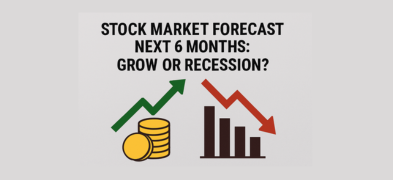Important Information
This website is managed by Ultima Markets’ international entities, and it’s important to emphasise that they are not subject to regulation by the FCA in the UK. Therefore, you must understand that you will not have the FCA’s protection when investing through this website – for example:
- You will not be guaranteed Negative Balance Protection
- You will not be protected by FCA’s leverage restrictions
- You will not have the right to settle disputes via the Financial Ombudsman Service (FOS)
- You will not be protected by Financial Services Compensation Scheme (FSCS)
- Any monies deposited will not be afforded the protection required under the FCA Client Assets Sourcebook. The level of protection for your funds will be determined by the regulations of the relevant local regulator.
Note: Ultima Markets is currently developing a dedicated website for UK clients and expects to onboard UK clients under FCA regulations in 2026.
If you would like to proceed and visit this website, you acknowledge and confirm the following:
- 1.The website is owned by Ultima Markets’ international entities and not by Ultima Markets UK Ltd, which is regulated by the FCA.
- 2.Ultima Markets Limited, or any of the Ultima Markets international entities, are neither based in the UK nor licensed by the FCA.
- 3.You are accessing the website at your own initiative and have not been solicited by Ultima Markets Limited in any way.
- 4.Investing through this website does not grant you the protections provided by the FCA.
- 5.Should you choose to invest through this website or with any of the international Ultima Markets entities, you will be subject to the rules and regulations of the relevant international regulatory authorities, not the FCA.
Ultima Markets wants to make it clear that we are duly licensed and authorised to offer the services and financial derivative products listed on our website. Individuals accessing this website and registering a trading account do so entirely of their own volition and without prior solicitation.
By confirming your decision to proceed with entering the website, you hereby affirm that this decision was solely initiated by you, and no solicitation has been made by any Ultima Markets entity.
I confirm my intention to proceed and enter this websiteLow Float Stocks: Find Out What It Is
Low float stocks can be an exciting yet risky part of the market. With a limited number of shares available for public trading, these stocks tend to be highly volatile and experience sharp price movements, attracting traders looking for quick gains. There is also the potential for big gains in low float stocks due to their rapid and substantial price swings.
However, their volatility also means they require careful handling. In this guide, we’ll explore what low float stocks are, why they matter, how to identify them, and strategies for trading them effectively.
What Are Low Float Stocks?

A low float stock refers to a company with a limited number of publicly available shares for trading, typically fewer than 10 million shares. The float is calculated by subtracting restricted shares, such as those held by executives, directors, or insiders, from the total outstanding shares.
For illustration, imagine a situation where Company A has 20 million shares outstanding, but only 5 million are publicly available shares that can be freely traded. In this case, the float for Company A is 5 million shares. This scarcity often results in higher volatility because small changes in buying or selling pressure can move the price dramatically.
Limited float also means these stocks typically have lower liquidity and wider bid-ask spreads, making it harder to enter and exit positions without affecting the price.
Why Do Low Float Stocks Matter?
Low float stocks stand out because their limited supply creates conditions for rapid swings in the stock’s price. A positive news announcement, earnings beat, or viral social media mention can send the stock soaring in a matter of hours. Conversely, bad news can cause equally sharp declines.
While these sharp moves can present profit opportunities, they also come with significant risks, including liquidity challenges and susceptibility to price manipulation. For these reasons, low float stocks are often the playground of day traders and momentum traders rather than those focused on long-term investing.
Key Characteristics of Low Float Stocks
Low float stocks typically share a few traits. They often have floats under 10 million shares, experience periods of high relative trading volume compared to their historical averages, and exhibit wider bid-ask spreads than larger-cap stocks. Insider ownership is usually high, with many shares held by company executives, management, and controlling investors. These closely held shares are typically excluded from the float, meaning they are not available for public trading. As a result, closely held shares reduce the number of shares available to the public and can significantly impact stock liquidity and market capitalisation calculations.
These factors combine to create a market environment where price changes of 20% or more in a single day are not uncommon. For traders, this volatility can mean opportunity, but only when approached with strict risk management.
Real-World Examples
Several stocks have gained attention recently for their low float dynamics. Beyond Meat (BYND) is a well-known example, experiencing sharp price swings shortly after its IPO because of its limited float. GoPro (GPRO) also saw explosive moves during meme-driven rallies, jumping more than 40% within days. Another notable case is Krispy Kreme (DNUT), which surged over 20% in a single session amid heavy short interest and retail momentum, though it is not a traditional low float stock. Many low float stocks tend to trade at lower price levels, often overlapping with penny stocks, but this is not always the case; some, like BYND, trade at much higher prices.
These cases illustrate why traders monitor float size and short interest closely when hunting for high-volatility setups. Understanding these factors is crucial when trading stocks, as they can significantly impact price movement and liquidity.
How to Find Low Float Stocks

Here’s a step-by-step approach to spotting low float opportunities:
| Step | Action |
| 1 | Use a stock screener and filter for float under 10M shares. |
| 2 | Look for relative volume spikes — 2x or more than average daily volume. |
| 3 | Check for news catalysts (earnings reports, FDA approvals, mergers). |
| 4 | Monitor short interest — 20%+ can signal potential for a short squeeze. |
| 5 | Analyse chart patterns before entry and set tight stop-losses. |
Identifying low float securities starts with the right tools. Professional stock screeners like Finviz and Trade Ideas allow traders to filter for floats under 10 million shares. Traders rely on data from these tools, including economic indicators and market statistics, to identify opportunities. Setting additional filters for relative volume, news catalysts, and price performance can help narrow down the most promising candidates.
News plays a critical role in low float moves. Earnings announcements, FDA approvals, mergers, or even viral mentions on social media can act as catalysts for rapid price changes. Monitoring premarket gappers is another effective tactic, as these often indicate securities poised for strong momentum during the trading session.
Short interest is also an important metric. When more than 20% of a security’s float is sold short, there’s potential for a short squeeze, which can amplify price spikes.
Strategies for Trading Low Float Stocks
Trading low float stocks successfully requires discipline and planning:
- Focus on catalysts: Positive news or analyst upgrades often precede big moves.
- Watch premarket gappers: Stocks up significantly in premarket often continue to trend if volume stays high.
- Trade pullbacks, not spikes: Enter after a retracement rather than chasing highs.
- Use small position sizes: Avoid big orders that could move the price against you.
- Set hard stop-losses: Protect against sudden reversals.
- Monitor corporate actions: Stock splits and reverse splits can significantly change the float, impacting liquidity, volatility, and trading strategies.
- Be aware of share buybacks: A share buyback reduces the float, which can affect the stock’s trading dynamics and stability.
Many traders also avoid holding overnight, as after-hours news can lead to gap-down losses.
Benefits and Risks

The primary benefit of trading low float stocks is the potential for outsized gains in a short time, as rapid inflows and outflows of money can cause significant price swings. However, these same dynamics make them risky. Low liquidity can lead to slippage, and a stock’s liquidity directly impacts how efficiently you can enter or exit positions, increasing the risk of unfavorable fills. The possibility of market manipulation is also higher than in large-cap stocks.
For beginners, these risks often outweigh the rewards. Even experienced traders approach low float stocks with caution, focusing on strict risk management and avoiding over-leverage.
Conclusion
Low float stocks offer an exciting but challenging arena for traders. Their limited supply creates the potential for dramatic price swings, both up and down. Understanding the public float and company’s float is crucial, as these metrics determine how many shares are actually available for trading and directly impact liquidity and volatility.
In contrast, a high float stock typically have tens or hundreds of millions of shares, providing high liquidity and lower volatility. Ultimately, success in this space depends on preparation: using the right screening tools, monitoring news catalysts, applying technical analysis, and managing risk at all times.
Approach these trades with discipline and caution. While the rewards can be substantial, the risks are equally significant. For those interested in learning more about low float stocks, understanding how a company’s float affects trading dynamics is essential. For traders who understand the dynamics and act strategically, low float stocks can be a powerful addition to a short-term trading strategy.
Disclaimer: This content is provided for informational purposes only and does not constitute, and should not be construed as, financial, investment, or other professional advice. No statement or opinion contained here in should be considered a recommendation by Ultima Markets or the author regarding any specific investment product, strategy, or transaction. Readers are advised not to rely solely on this material when making investment decisions and should seek independent advice where appropriate.












